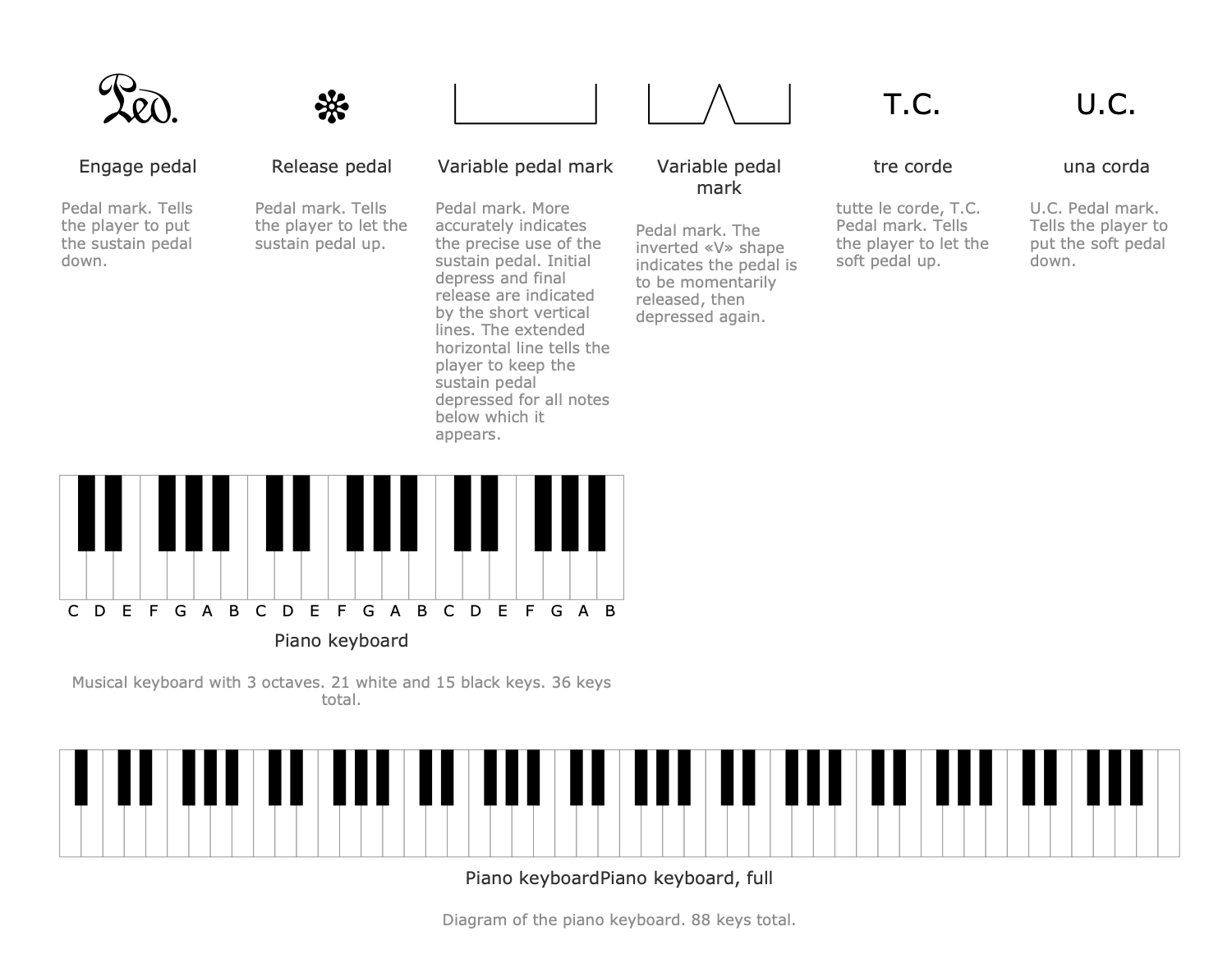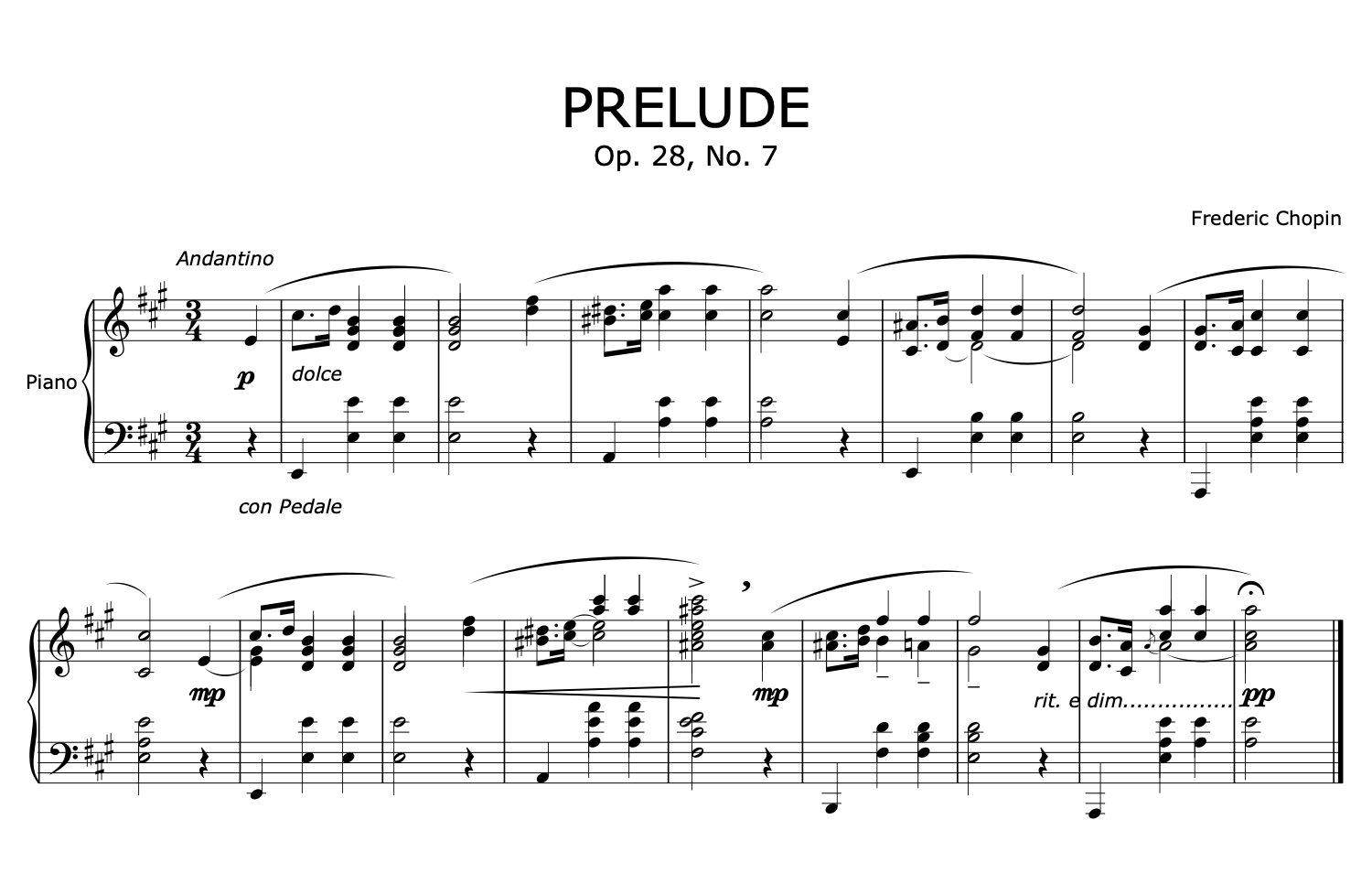Music Notation
Music notation is the symbols used to record and perform music. It is used by composers to display their music in written or printed form for themselves or other musicians. Music notation allows presenting music in a form suitable for study and analysis. This visual record informs musicians how to perform a composition, which notes to play, in which sequence, and how long to play them. Music notation helps players to play music correctly, even if they have never heard it before.
Music has been present in most cultures for thousands of years. At the same time, different musical instruments were used in every era and every country. The earliest examples of written music using musical notation relate to 1400 BC and were discovered on the territory of modern Iraq, in Greece, Babylon, Turkey; although they differ from modern musical notation. The first staves with multiple lines were introduced in the 11th century in Italy. Since the 15th century, sheet music is widespread, it are printed and spread around the world.
Modern musical notation is a series of symbols and markings written on the staff. The musical sheet contains information about musical sounds and rhythm, about the pitches of notes, duration, and volume. Duration characterizes the rhythm and tempo of the sound, volume is the intensity of the sound. Usually, a standard musical notation is used and suggests placement of notes on 5-line musical staffs with 4 spaces, each of them starts with one of the clefs, most often the treble clef or bass clef. The clef tells about the pitch of notes, it is the frequency property of sound waves. A higher pitch is associated with a high sound wave frequency, respectively low pitch with low frequency. The bass clef indicates the low notes and the treble clef high notes.
The 7 notes in Western musical notation are named A, B, C, D, E, F, G and are placed on staffs differently, each in its line or space between them. The notes of the treble clef lines are E, G, B, D, F (for simplicity of remembering is used sentence 'Every Green Bus Drives Fast') and the notes in the treble clef spaces are F, A, C, E ('FACE in the space'). Respectively the notes of the bass clef lines are G, B, D, F, A ('Great Big Dogs Fight Aliens') and the notes in the bass clef spaces are A, C, E, G ('All Cows Eat Grass'). Sometimes, notes go also higher or lower than the staff.
The musical notation also uses accidentals. The same note can be referred to in different ways. There are ‘sharp’ or ‘flat’ notes played one semitone higher or lower. The ‘natural’ notes are played without sharp or flat. Musical notation can also include key signatures at the beginning of a line of music (several sharps, flats, or no one).

Example 1. Music Notation for Sheet Music Design
ConceptDraw DIAGRAM charting and vector drawing software enhanced with Piano Sheet Music solution is a powerful design software to draw musical sheets. The solution includes all necessary drawing tools, professionally designed quick-start templates, attractive samples, and 12 libraries with 118 music notation vector design elements — piano notation elements, lines, bars, clefs, notes, accidentals elements, octave signs, time signatures, and many others.
Example 2. Piano Notation Library Design Elements
Simply drag the needed elements from the solution libraries to one of the pre-made sheet music templates and get an excellent result in minutes. The list of Piano Sheet Music solution libraries includes:
- Piano Notation
- Notes
- Elements Accidentals
- Lines Bars Clefs
- Octave Signs
- Articulation Marks
- Note Relationships
- Time Signatures
- Dynamics
- Ornaments
- Repetition and Codas
- Rests and Breaks
Example 3. Frederic Chopin's Prelude No. 7
The piano sheet music samples you see on this page were created in ConceptDraw DIAGRAM software using the drawing tools of the Piano Sheet Music Solution. These examples successfully demonstrate solution's capabilities and the professional results you can achieve using it. An experienced user spent 10-15 minutes creating each of these samples.
Use the powerful tools of the Piano Sheet Music solution to design your own music sheets for piano quick, easy, and effective.
All source documents are vector graphic documents. They are available for reviewing, modifying, or converting to a variety of formats (PDF file, MS PowerPoint, MS Visio, and many other graphic formats) from the ConceptDraw STORE. The Piano Sheet Music Solution is available for ConceptDraw DIAGRAM users.

